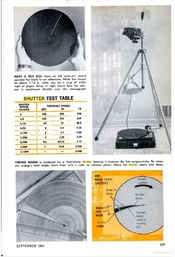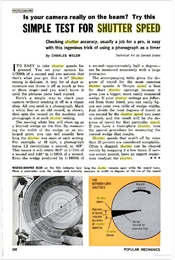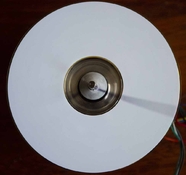Smokwawelski
Member
Hello everyone. I've been meaning to test my Nikon F's shutter speeds, but I've found that the shutter speed testers currently on the market are either too expensive or not accurate enough. So, I looked towards some more DIY solutions. An interesting way I've found involves photographing a record with a line drawn from its center to its edge spinning at a known rate on a turntable. The line creates a wedge shape due to motion blur from the record spinning, and by measuring the angle of the wedge and doing some simple math (eg. 7.8°: 78rpm = 1.3 rates per second = 468°, divide by the angle you found: 468°/7.8° = 60, or 1/60 of a second) you can find out how fast your shutter is. I've seen many discussions about this method here, but no mention of how it applies to focal plane shutters. Distortion caused by the rolling shutter effect is the primary concern. From what I understand, if the record is travelling with the shutter, the image will stretch, and if it is travelling against the shutter, it will compress. This will affect the angle of the wedge. Attached is two pages published in the September 1967 edition of Popular Mechanics detailing the method described above. To account for the rolling shutter, they suggest simply drawing lines from the edges of the wedge to the center of the circle and measuring the angle of the resulting wedge. Does this work? If not, is there any way to apply this method to focal plane shutters? Thanks.






